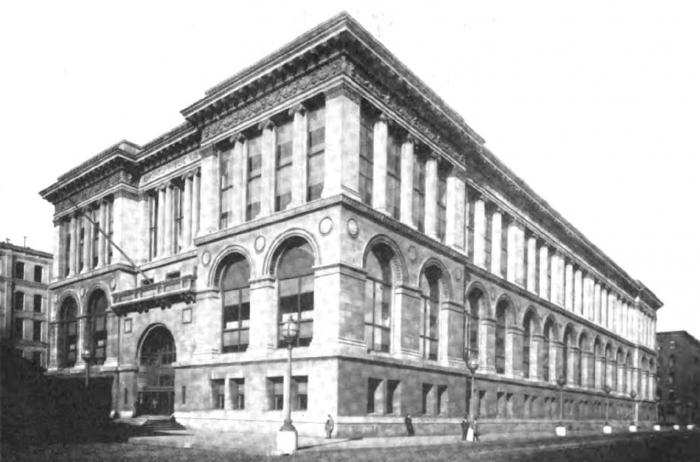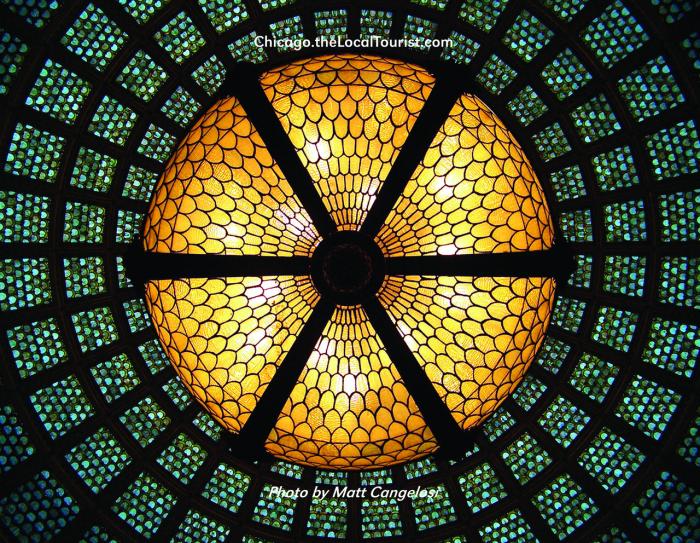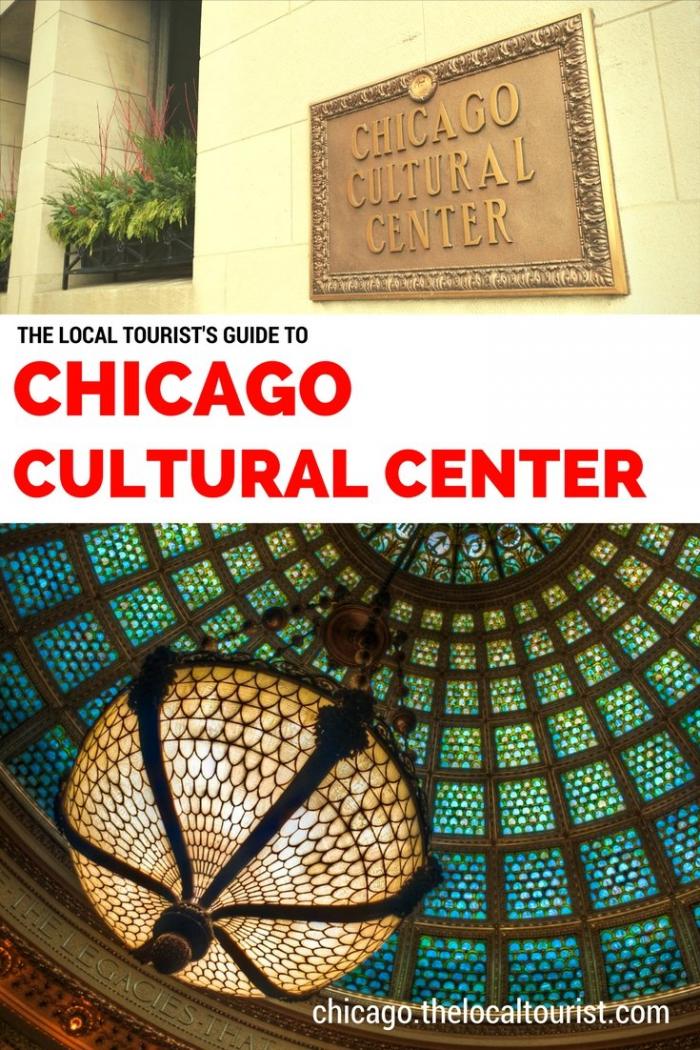The Chicago Cultural Center is a downtown landmark and one of Chicago’s brightest gems.
Known as The People’s Palace, it was the nation’s first free municipal cultural venue, and today its programming in the arts makes it one of the most popular attractions in the city.
A Brief History of the Chicago Cultural Center

The building was originally the city’s library. Built in 1897 at a cost of two million dollars, the massive edifice stretches from Randolph to Washington Street, has three-feet-thick walls, and boasts two impressive domes.
In addition to being built as the city’s library, it was also a meeting hall and memorial for the Grand Army Of The Republic, or GAR.
The GAR donated the land for the building and one of the two domes is part of their memorial. The rest of the funding for the building came from a 1% tax. While taxing for projects of this type may seem commonplace now, at the time it was innovative and meant that the new library belonged to the people.
In 1991 the library moved across the Loop to the Harold Washington Library Center and the building was converted to an arts and culture center, making it the nation’s first free municipal cultural center.
Find a place to stay near the Chicago Cultural Center
Architectural Highlights

The Chicago Cultural Center is a massive edifice. Designed by the Boston architectural firm Shepley, Rutan and Coolidge, it stretches 352 feet from north to south, longer than a football field. The building rests on 2,357 wooden piles that were driven 75 feet into the clay, and in over a century there’s been no noticeable settling.
Its most famous feature is probably the two domes. The Chicago Cultural Center has the largest Tiffany glass dome in the world. Located in Preston Bradley Hall, the dome is 38 feet in diameter and consists of over 30,000 pieces of glass. The dome underwent a complete restoration in 2008.
While that gets the most attention, the dome on the north side of the building is actually larger, at 40 feet in diameter and more than 50,000 pieces of glass.

In addition to the beautiful exterior architecture and the domes for which the center is famous, there are several architectural highlights throughout the building. Only the highest quality materials were used during its construction, from the Bedford Blue Limestone at its base to green marble from Connemara, Ireland, and Vermont.
Related: Unique things to do Chicago
Chicago Cultural Center Programming
The Chicago Cultural Center offers more than 1,000 free arts, music, and performing arts programs throughout the year. The types of programs vary, and both emerging and established artists are featured.
Music programs include performances by chamber orchestras, weekly solo and ensemble classical music performances, and a program that’s just for kids. There are also rotating exhibits in the center’s multiple galleries. Because they change so frequently the best way to see what’s happening is to visit their website.
You can also learn more about the center with a free tour. These are led every Wednesday, Thursday, Friday & Saturday at 1:15pm.
Chicago Cultural Center Hours
- Monday–Friday, 10am–7pm
- Saturday–Sunday, 10am–5pm
The Chicago Cultural Center, 78 E Washington St., is one of the city’s most popular resources, and for good reason. By offering free programs throughout the year it helps to keep Chicago’s culture alive and thriving.
Find nearby parking
Don’t want to deal with parking near the Chicago Cultural Center? Take a ride-share service. If you’re new to ride-sharing, use one of our codes and you’ll get a credit with Uber and Lyft.
Like this? Pin it!
